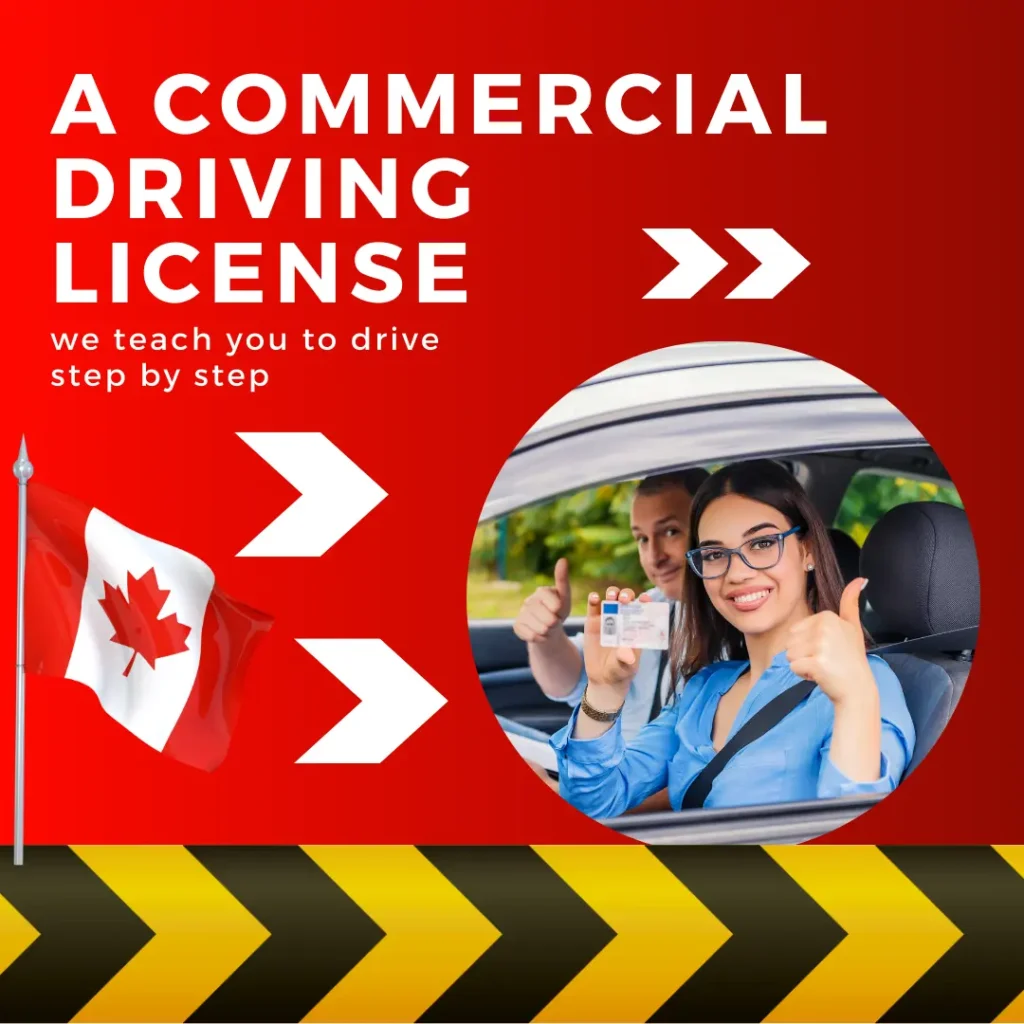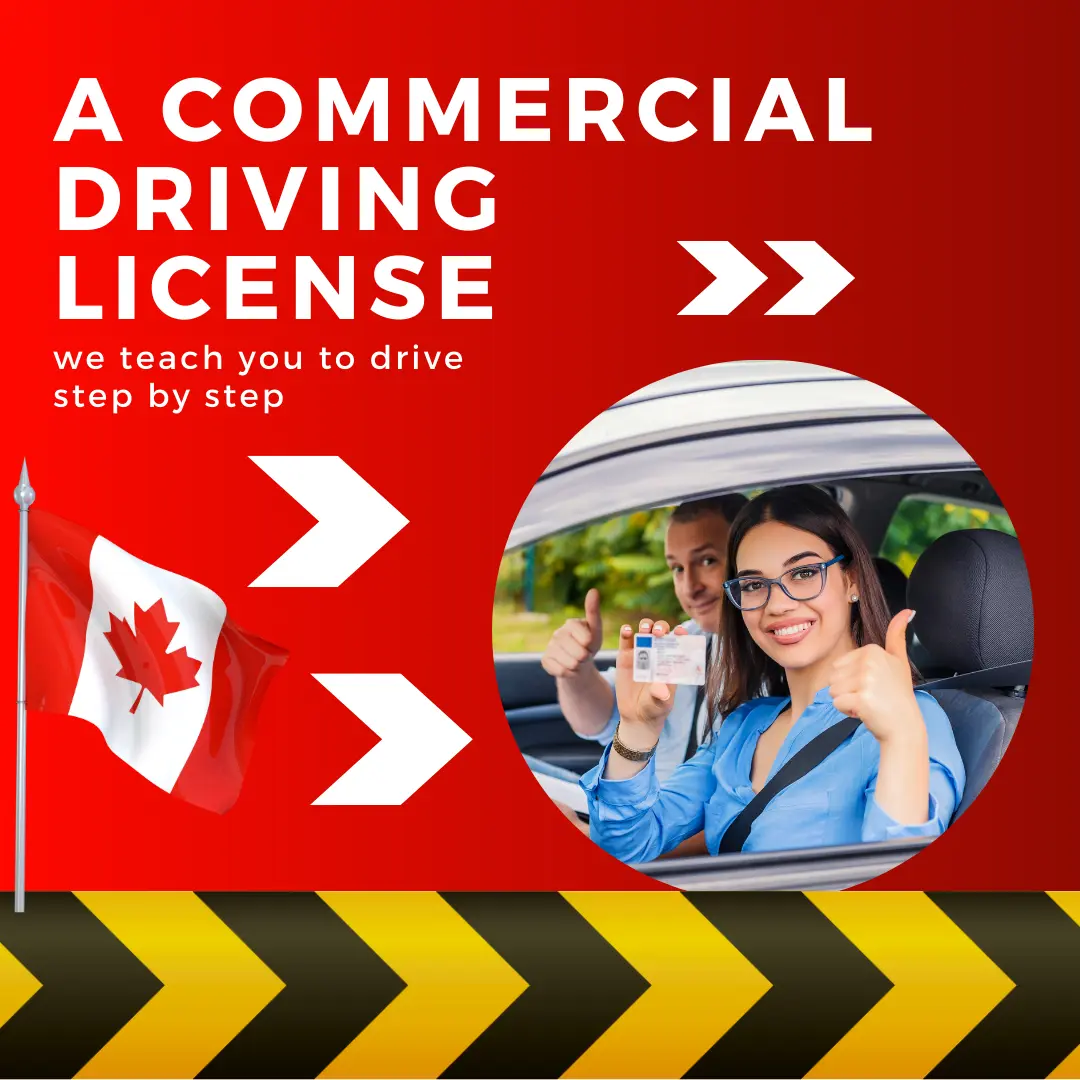How do I get a commercial driving license in Canada?
A commercial driving license is designed to make sure that drivers of commercial vehicles, including trucks and buses, have the skills and familiarity to drive safely with precautions. Following this, it will be easy to apply for a commercial driving license. CDLs aim to improve road safety through the setting of standards for commercial vehicle drivers, such as those driving trucks and buses.
Commercial vehicle license meaning
A commercial driving license (CDL), also known as a commercial vehicle license, comes in a variety of licenses that are considered extremely important for commercial vehicles. They are given to drivers of vehicles over a certain mass that transports hazardous material or have a specified number of passengers. Commercial Driving License are designed to make sure that commercial vehicle drivers have the right acquaintance and skills needed to drive them safely.
Key features of a Commercial Driving License are:
- Classifications CDLs can be categorized into countless classes, including Class A, B, and C, depending on vehicle type.
- Validations CDLs can have additional endorsements that permit drivers to drive specific vehicles or transport particular materials. Some of the most common endorsements are air brakes and hazardous materials. Other popular ones include tankers, passenger transport, and air brakes.
- Requirements for Training: In order to obtain a CDL license, many individuals must undergo both classroom training and hands-on practical experience. Truck driving schools are a popular choice for aspiring commercial drivers to help them prepare for their required exams.
- Tests: CDL candidates must pass written tests of knowledge and skills, as well as a practical test on the road. Written tests include topics like vehicle operation, road signs, and safety regulations.
- Medical Standards: In order to be physically fit to perform the duties of a commercial driver, they must meet certain medical standards. A qualified health care professional will conduct a thorough medical exam.
- Maintenance and Renewal: Commercial driver’s licenses must be maintained and renewed on a regular basis. Some jurisdictions require that drivers undergo extra training or tests to keep their driving privileges.
CDLs can be regulated in different ways by each state or province. The requirements may also vary. CDLs are designed to improve road safety by making sure that commercial vehicle operators have the required skills, qualifications, and knowledge.
To apply for Commercial driving license, you must have knowledge about CDL categories and classes
The Commercial Driving License (CDL) is divided into different types. Each type corresponds to a specific class of vehicle and an endorsement that indicates the driver’s qualification for certain tasks. The main CDL categories are:
Class A Commercial Driving License
Description: Authorizes the operation of vehicles with weight ratings of 26001 pounds and more as well as those towing trailers not exceeding 10000 pounds.
Common uses: Applicable for buses, straight trucks and large delivery vehicles
Requirement: For intrastate driving, the applicant must typically be 18 or older. It is 21 years of age for interstate transportation and hazardous material transport. The prerequisites are a valid driver’s license and a good driving history. To ensure that they are in good health, aspiring drivers must undergo a physical examination. It is recommended that individuals complete a CDL program. A criminal record check may be necessary depending on jurisdiction. Applicants must also pay all fees associated with the application.
Class B Commercial Driving License:
Description: Permits the operation of vehicles having a combined weight of at least 26,001 pounds when the vehicle towing has a rating over 10,000 pounds.
Common uses: typically used for large vehicles such as semi-trucks and tractor-trailers.
Requirement: Candidates should be above 17, but for those who drive interstate, transport hazardous materials or travel across state lines, they may need to be 21. The prerequisites are a valid driver’s licence and a good driving history. A physical examination as part of the application process to determine if they are fit to drive commercially. They can obtain their Commercial Learner’s Permit by passing the relevant knowledge test. Practical training, behind-the-wheel experience, and knowledge of vehicle inspections and basic maneuvers are essential to preparing drivers for their skills tests. To obtain a CDL Class B, it is important to stay informed of any regulatory changes and pay the required fees.
Commercial Driving License Class C:
Description: This applies to vehicles that can transport up to 16 passengers, including the driver.
Uses Common: Used on passenger vans and small buses that carry hazardous materials but do not need a class A or B licence.
Requirement: In general, the minimum age for applicants is 18; however, this may increase in certain cases, such as interstate transportation or transporting hazardous materials. Possessing and maintaining a regular driver’s licence is a prerequisite to obtaining a Commercial driving license Class C. To ensure that they are in good health, prospective drivers will undergo a physical examination. It is recommended that drivers complete a CDL program. Individuals can also obtain their Commercial Learner’s Permit by passing the relevant knowledge test. Most applicants are subjected to a criminal history check, especially if involved with the transportation of dangerous materials. To obtain a CDL Class C, it is important to stay informed of any changes in regulations and pay the required fees.
Endorsements:
Hazmat (H): requirement for drivers transporting dangerous materials. This involves a background investigation and an additional written exam.
Tank vehicles (N): Required for drivers of vehicles that transport liquids and gases in bulk.
Double/Triple Trailers (T): Requirement for all drivers of double and triple trailers.
Passenger: Required for drivers of vehicles that can transport at least 16 passengers.
School bus (S): requirement for school bus drivers.
For each Commercial Driving License, there are written tests of knowledge and skills and practical tests that relate to class and endorsements. Depending on the endorsement, additional training or background checks may be required. Commercial drivers should be aware of the requirements that apply to the vehicles and passengers they plan to drive. CDL regulations may vary slightly from state to state or province to province. To prepare for Commercial Driving License exams, many aspiring commercial drivers attend accredited trucking schools.

Process for Obtaining a Commercial Vehicle Driver’s License
Step 1
You must meet all age restrictions. These can vary, but they are usually 18 years old for transporting intrastate materials (within a state or province) and 21 years old for transportation of hazardous material or interstate.
Step 2
A valid driver’s licence (noncommercial).
Step 3
You should undergo a thorough medical exam by a licensed medical examiner in order to determine if you are fit for commercial driving.
Step 4
You may want to consider completing an official CDL program that includes classroom training and behind-the-wheel training. Training programs are not mandatory but they can enhance your knowledge and skills.
Step 5
Completing behind-the-wheel training under the supervision of a CDL-holder or a CDL-qualified instructor is essential. It is important to gain practical experience and prepare for the test.
Step 6
You must pass the commercial driving license skill tests. These include an inspection of your vehicle before you leave, a test on basic vehicle controls, and a driving test. These tests assess your ability to drive a commercial truck safely and efficiently.
Step 7
Get any endorsements you need for specific tasks such as the transport of passengers or hazardous materials or driving double and triple trailers
Step 8
Some jurisdictions require criminal background checks, particularly for individuals who intend to transport dangerous materials.
Step 9
You will receive a Commercial Vehicle Driver’s License after you have successfully completed the required tests.
Step 10
Keep up-to-date with any renewals, training, and/or testing required for your Commercial Driving License.
You should be aware that the requirements for commercial vehicle driving can differ from one jurisdiction to another. It is best to contact the licensing authority of the state or province in question to get the latest and most accurate information. Throughout your career as a commercial vehicle driver, it is important to stay informed of any changes in regulations.
How to apply for commercial driving license?
To apply for a Commercial Driver’s License (CDL), start by meeting the eligibility criteria, which typically includes being at least 18 years old (or 21 for interstate driving) and possessing a valid regular driver’s license. Consider completing a formal CDL training program to enhance your skills and knowledge. Undergo a medical examination by a certified medical examiner to ensure you meet health standards. Pass written knowledge tests to obtain a Commercial Learner’s Permit (CLP), allowing for practice driving with restrictions. Engage in practical training, including behind-the-wheel instruction, and then successfully complete the CDL skills tests, covering vehicle inspections, basic control maneuvers, and on-road driving. Obtain any necessary endorsements, such as for hazardous materials or passenger transport. Upon meeting all requirements, the licensing authority will issue your Commercial Driver’s License. Stay informed about renewal and ongoing requirements to maintain your CDL throughout your career.
What do you mean by commercial medical?
Commercial medicals, also known as commercial driver’s health examinations, are required to obtain or renew a Commercial Driver’s License. A certified medical examiner will evaluate vision, hearing and blood pressure to determine if drivers are fit enough to safely operate commercial vehicles. The purpose of this examination is to improve road safety.







